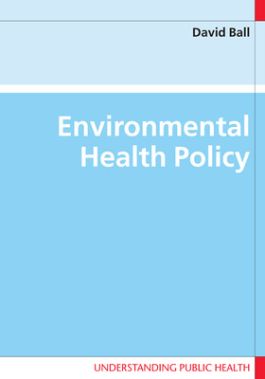Environmental Health Policy
- Access the eBook anytime, anywhere: online or offline
- Create notes, flashcards and make annotations while you study
- Full searchable content: quickly find the answers you are looking for
Section 1: Introduction
Introduction to environmental health policy
The emergence of risk assessment
Section 2: Assessing environmental health risks
A model for human health risk assessment
Hazard identification
The dose–response relationship
Exposure assessment
Risk characterization
Section 3: Rational action and environmental health policy
Economic appraisal
The management of ionizing radiation
Environment and safety
Section 4: Beyond the rational action approach
An introduction to alternative theories of risk
Risk perception and the psychometric paradigm
Cultural theory
Section 5: Other approaches
Environmental, social and health impact assessment
Environmental risk ranking
Alternatives assessment to precaution
Section 6: Making policy
From risk communication to participatory decision making
Philosophy, politics and prejudice
Section 7: Initiatives – local to global
Issues of local policy
Issues of global policy
Glossary
Index
Series Editors: Nick Black and Rosalind Raine
There is an increasing global awareness of the inevitable limits of individual health care and of the need to complement such services with effective public health strategies. Understanding Public Health is an innovative series of twenty books, published by Open University Press in collaboration with the London School of Hygiene and Tropical Medicine. It provides self-directed learning covering the major issues in public health affecting low, middle and high income countries.
The series is aimed at those studying public health, either by distance learning or more traditional methods, as well as public health practitioners and policy makers.
ENVIRONMENTAL HEALTH POLICY
Environmental health policy occupies a prominent position on both local and global agendas as old and new challenges confront the human race. There is a continual requirement for policies which will deal effectively with a seemingly never-ending supply of hazards which impinge on health and wellbeing. This book provides a multidisciplinary window onto environmental policy and its formulation. From this you will observe both order which exists at the centre, and controversies around the borders.
This book considers:
- Key threats to human health from the physical environment
- Policies that might be pursued to minimise those risks
- How risks can be identified and quantified
- How such information can be communicated to the public
- How health impact assessments can be carried out
- How risks can be managed and regulated

